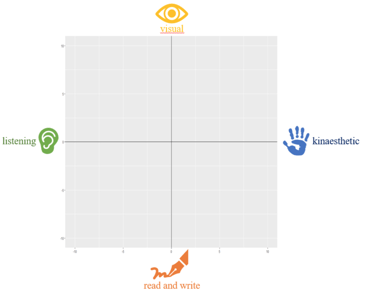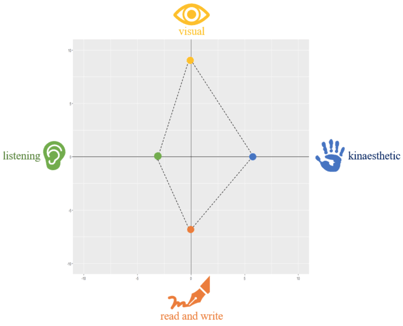In today's education landscape, personalized learning has become more crucial than ever. Each...
An Effective Learning Begins by Identifying Your Study Style
What is your learning style? Identify your learning style (study type) to mark the beginning of an effective learning journey – Anna Gluch
Have you ever wondered how you could study more effectively? A solution to your problem may be to locate your study type! All you need is one sheet of paper, a pencil and a few minutes of time.
Let us start with an overview. One can differentiate between four different study types: visual, auditory, read and write and kinaesthetic. After introducing the study types in more detail, there is going to be a test to identify your individual study type. According to your result, you are going to get individual feedback on which study techniques will bring you the best results.
- The visual learning best with videos and images.
- The auditory learning best listening to study material. To test whether you apply to this study type, please ask someone to start the following audio file: auditory study type – Google Translator. Then, recall and count the words you can remember.
- The read and write learning best through books and making notes. To test your affiliation to this study type, please read and write down the following list of words: snowman, summer, telephone, table, yoghurt, book, flower, donkey, chocolate, paper.
- Finally, there is the kinaesthetic learning . This type learns best through engaging him- or herself in the task. Please ask someone to gather the following items for you: apple, keys, nut, potato, baseball, map, money, smartphone, tissue, pencil. With eyes closed, examine those one after the other. Then, report the items you can recall.
The test will present you with 10 words for each exercise. Those will be presented to you in various forms to test for your personal study type.
TEST: Please have a look at the following 10 pictograms. If you have considered them carefully, please recall all the pictograms you remember and write them onto your sheet of paper.


If you are finished, please count the number of words you were able to recall for each of the exercises. Subsequently, please plot the number of words you could recall corresponding with each study type in the following graph. They will be intercepts of the associated axes. Last but not least, connect the dots for better identification.

Evaluation: Most individuals combine all the different study types in different fractions. The exemplary graph underneath would suggest that the person’s most prominent study type is the visual one, followed by read and write as well as kinaesthetic.
Let us now understand the implications of each study type to help you understand how to interpret each one.
Implications for the visual study type: Sketching mind-maps, using symbols and drawing overview pictures for your learning material will aid your studying. You respond well to visuals and your learning retention is highest in this style.
Implications for the auditory study type: Auditory type learners respond well to audio and cues. Carefully listening and participating in lectures and lessons will make studying easier for you. Next, you should consider forming a study group with friends or classmates. In addition, you could also record and listen to your learning material.
Implications for the read and write study type: Rereading your class material and taking notes on it will be most beneficial for your learning progress. Handwritten notes have been proven to be more effective than digital notes. Furthermore, you could also write flashcards.
Implications for the kinaesthetic study type: Through experimenting and solving problems yourself, you will achieve your best learning performance. For example, you could deconstruct devices and experiment with formulas. Furthermore, you could solve a variety of exercises on the topic that is to be learned.
So now that you have found your study guide, learning can begin! There are some factors you should consider as well. To increase your study motivation, you could set yourself little goals and reward yourself for reaching them. Below are some tips to help you get started to maximize your learning retention once you have identified your learning style aka study type.
- Find your study time: Observe yourself for a couple of days to answer the following questions and adjust your study plan accordingly:
- Find your most attentive time: When am I most attentive? In the morning, in the afternoon or in the evening?
- Rest is Important: How much sleep do I need to feel well-rested throughout the whole day?
- Attention span: After how much time do I lose my focus? You should take a break at the latest then.
- Find your study place: Observe and adjust for the subsequent questions as well:
- Do you like to have other people around when studying?
- Do calming sounds help you to focus and study?
- Is your desk organized appropriately?
- Do you prefer to study at home or in your local library?
Regardless of your study type, do not forget to take notice of the importance of a healthy lifestyle. This includes your nutrition, sleep and doing sports. Happy learning!
reference: https://www.oxfordlearning.com/complete-study-guide/
Meet the Author
Anna Katharina Gluch is pursuing Bachelor of Economics with focus on Marketing at Goethe University in Frankfurt, Germany. Anna is an exchange student at the Case Western Reserve University.
.png?width=100&height=100&name=Kapdec%20Logo%20(400px).png)


